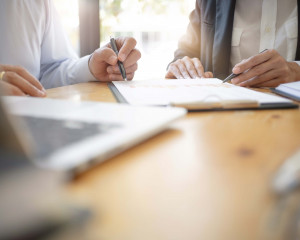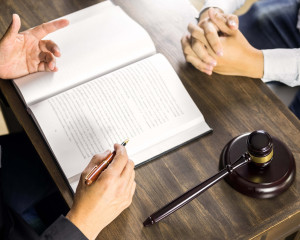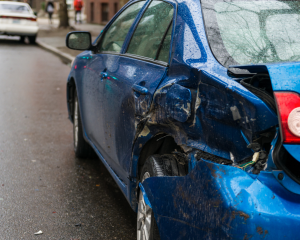Pedestrian deaths have increased, with 6,283 pedestrians dying in traffic accidents in 2018 compared to 2017, an increase of 3 percent. Florida traffic accidents involving bicycles and electric scooters are not included in these statistics.
It is not surprising that serious injuries and deaths can occur when a vehicle hits a pedestrian at high speeds. However, a driver can severely injure a pedestrian by driving at just 10 miles per hour. You should know what to do immediately following a pedestrian accident as a driver. In addition to learning the basics of fault, drivers should also understand how injuries and damages will be compensated, and most importantly, how to prevent these kinds of accidents from happening in the first place. Continue reading to learn more about Pedestrian accidents and the ways they can affect you.
Why Pedestrian Accidents Are Common In Florida
Why are these accidents so common? This occurs naturally when two objects move at drastically different speeds. Bicycles move faster than pedestrians, cars move faster than pedestrians, and pedestrians are more vulnerable to impacts from bicycles or cars. For pedestrian accidents to decrease, that would mean everyone drove at a safe speed, everyone used crosswalks, and everyone practiced extra patience so other vehicles could be allowed to pass rather than try to rush across.
Don’t Forget These Steps After A Pedestrian Accident
One of the worst things that could happen to a driver is hitting a pedestrian. If a car hits a person, the potential for serious injury is significant, and the outcomes of a bad accident like this can be devastating. It is understandable that hitting a pedestrian is frightening, but it is best to stay calm and respond methodically to ensure the best possible outcome. There are specific steps a driver should take following an accident:
- Find a Safe Place: If someone has been injured, get them to a safe location right away. Don't try to administer medical treatment beyond what is necessary for an emergency, such as performing CPR. In case they are unconscious or seriously injured, do not try to move them.
- Call for help: After you have established that you are not in immediate danger, you should find out how the pedestrian who has been struck is doing. Make sure the pedestrian receives medical care and stay with him until medical help is available.
- Call the police: If your car strikes a pedestrian, you should report it to the police. This is the law in many states. It is also illegal to leave the scene without getting the police involved. You could face serious legal repercussions if you leave the scene of an accident. It would be considered a hit and run which is a crime.
- Document the accident: Having the accident details documented will help in the future if an insurance claim is filed. Be sure to note the pedestrian's contact details and the contact details of any witnesses, date, time, location, road conditions, weather, and your version of what happened. You should also note the name and badge number of the police officers at the scene. A photo of the accident scene can also be useful documentation to piece together the events that led to it. Photographs of property damage may also be helpful.
- Contact your insurance: In the aftermath of an accident, it is essential to call your insurance company. Their office will be able to contact the pedestrian's lawyer on your behalf. Also, your lawyer or you should look at your insurance policy to understand how the insurance policy covers you and what liabilities you may have.
- Be careful what you say: When you hit a pedestrian, it's understandable that you would be shocked, but you should try to remain calm and be aware of what you say. Avoid apologizing or implying to anyone that the accident was your fault. It is possible that you do not fully understand the facts and end up assuming liability for something that was not your fault. A pedestrian may be found at fault for an accident by the police or your insurance company. For example, by stepping deliberately into a street, or by jaywalking. Obviously, you need to tell the police the truth and be straightforward about what happened. If you were speeding or broke other traffic laws when the accident took place, you could face serious charges. Trying to point the finger at the pedestrian may not help your case, even if the pedestrian is later found at fault.
What If You Are The Injured Pedestrian
You may be able to take action against the negligent, at-fault driver who caused your injury in order to recover compensation for your pain and suffering damages, excess medical bills, excess lost wages, and other economic damages.
To avoid losing your right to pain and suffering damages you must demonstrate a “serious impairment of body function,” which under Florida's No-Fault law is the legal threshold involved in recovering “noneconomic loss” damages from the at-fault driver who caused your accident.
In addition to the excess medical bills as well as the excess lost wages, you can claim economic damages against the at-fault party. You will receive compensation for medical bills and lost income that is not covered by the insurance policy that you are claiming benefits from or that exceed the benefits available to injured pedestrians under the no-fault law.
Bodily Injury Claim
Damages can be sought outside of the No-Fault system if you are seriously injured and want to seek benefits. Bodily injury or personal injury claims differ from no-fault claims. Auto insurance companies are ultimately responsible for both, but each action has nuances and regulations all its own.
It is necessary for a pedestrian who wants to pursue a bodily injury claim to prove that they have suffered harm that meets the serious injury threshold and that they have incurred economic damages exceeding $10,000.
Serious injuries could include the following:
- Fracture
- Loss of a fetus
- Permanent loss of use of a body organ
- Dismemberment
- Substantial disfigurement
- Limitation of use of a body function or system
How To Avoid An Accident As A Pedestrian
Often times pedestrian accidents can be prevented altogether. If you are a pedestrian you can avoid an accident by following these five tips:
Increase Your Visibility
According to the NHTSA, lack of visibility is a leading cause of pedestrian accidents. It is more likely that a driver will hit you if they cannot see you. You can increase your visibility as a pedestrian by doing the following things:
- Dress in bright colors
- Make sure your clothing has reflectors
- When it's dark, use a flashlight
- Wear light colors at night if you can. It is almost impossible to see a pedestrian in dark clothing until it is too late, even with bright headlights.
When you increase your visibility, drivers can slow down or react more effectively when they see you ahead.
Use a Designated Crosswalk
Drivers are accustomed to seeing pedestrians crossing the street at crosswalks. As a driver approaches a crosswalk, he or she may lookout for pedestrians. Most crosswalks are marked with a sign alerting drivers as well.
Attempting to cross the street anywhere other than the designated crosswalk can surprise a driver. There may not be enough time for the driver to react. Because of this, it is more likely that they will hit you or cause a crash in an attempt to avoid you.
Stay Off the Road
The more time spent on the road, the higher the risk of being hit by a car. In order to ensure your safety, maintain as much distance as possible between you and the road. Use the sidewalk instead of the road if there is one available. This will reduce the chances of being hit. When there are no sidewalks or paths available, walk on the shoulder as far as you can. Avoid walking with the traffic and instead face it. Seeing oncoming traffic can give you some time to react if it appears that you will be struck.
Avoid Distractions
A pedestrian who is distracted while walking may be in danger. Walking out into the roadway or getting too close to an oncoming vehicle is possible if you are not paying attention. As a result, do not use your phone or text while walking along the side of the street or crossing the street. While walking near traffic, you may want to avoid using headphones or earbuds. You can stay more aware of your surroundings if you put down your phone and remove earbuds.
Drivers are also prone to distractions. Just because you can see a motorist does not mean they can see you. When approaching a crosswalk, you may want to wait until they decelerate or stop before crossing.
Do Not Use Drugs or Alcohol
When you drink or use drugs, you can lose control of your judgment and motor skills. You may end up walking out into the road if you are drunk or high. As a car approaches, you may not have time to get out of the way. Risky behavior is more likely to occur among those who are drunk. When you are drunk, you may be tempted to take risks you otherwise wouldn't.
Contact DOCS4PI For Help
If you have been injured, call us at #1-888-DOCS4PI to get evaluated and start your healing process. In cases of legal need, our doctors have access to some of the most experienced and qualified attorneys in their area.





